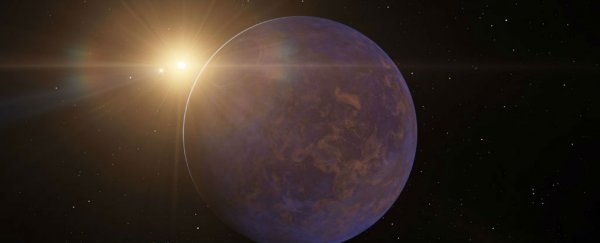Researchers have found signs of two new exoplanets that are roughly twice the mass of Jupiter, orbiting a 1.6-billion-year-old evolved star called HD 47366, that lies 260 light-years from Earth.
An international team of astronomers found the planets using Doppler spectroscopy, a technique that examines far away stars to see if their light wobbles. If a wobble occurs, it means that the mass of an exoplanet is tugging on the star, which is usually enough initial proof of existence for researchers to get excited. However, with this star, something strange happened - it wobbled twice in quick succession.
So what does this mean? Basically, if the star's light wobbles more than once, it usually indicates that more than one planet is orbiting it. For this star, the wobbles happened twice in a short period of time - a rare occurrence, because it hints that two massive planets, which remain unnamed right now, are orbiting the star close together.
This hints that the system as a whole is unstable, reports Tomasz Nowakowski for Phys.org. Usually, as planets orbit a star, the gravity they produce keeps them in a sort of 'orbital balance' with one another. But sometimes this balance can shift, causing each planet in the system to change course, and maybe even shoot out of orbit altogether, further into space.
The team behind the discovery, led by Bun'ei Sato from the Tokyo Institute of Technology in Japan, says it's not yet clear how this imbalance occurred. The most likely scenario is that is happened gradually as HD 47366 aged. At roughly 1.6 billion years old, the 'evolved' star is roughly twice as large as our Sun. These older, larger stars are known to have multiple, giant exoplanets orbiting them in an unstable pattern. Although, why this happens is still a mystery of the Universe.
Though there are a lot of unanswered questions, the team believes that examining HD 47366 will shed light on how planetary systems, both stable and unstable, form and evolve over time. Hopefully, as they continue to study the system, it will help us understand what might happen to the Sun as it ages, which is vitally important, considering where we call home.
The paper is available online at pre-print website, arXiv.org.
